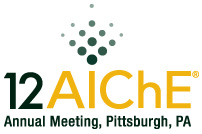

In order to enhance the solar-to-hydrogen conversion efficiencies (ηSTH) of Si-based MOS photoelectrodes, our research efforts have focused on two areas. First, well-defined and ordered metallic structures have been synthesized on high quality SiO2 tunneling layers, grown by rapid thermal annealing (RTA) on p-Si(100). Thermally-grown SiO2 is known to exhibit low interfacial defect densities,[3] meaning that voltage losses incurred by carrier tunneling via the associated mid-gap trap states can be minimized.[2] In this work, we show that the use of thermally grown SiO2 layers for Pt-SiO2-Si photoelectrodes produces a substantial increase in photocurrent onset potential. The well-defined and ordered nature of the metal components in these photoelectrodes provides the additional benefit of being able to optimize the spacing and coverage of collector structures. By systematically varying these two parameters, we show how optical and kinetic overpotential losses can be balanced to maximize ηSTH values for a given substrate/oxide combination. The second thrust of this work is using in-situ photoelectrochemical measurements with high spatial resolution to aid in optimization of MOS structures and gain a better understanding of charge transfer phenomena in those structures. This talk will specifically discuss the use of photoelectrochemical microscopy (PECM) for micro-scale mapping of external quantum efficiency and determination of important device parameters such as the minority carrier diffusion length. PECM measurements indicate substantial room for improvement in macro-scale photoelectrode performance and demonstrate the powerful utility of PECM in the design and analysis of MOS photoelectrodes.
References
[1.] H.J. Lewerenz, et al., Electrochem. Acta, 2011, 56, 10726.
[2.] A.G. Munoz and H.J. Lewerenz, ChemPhysChem, 2010, 11, 1603.
[3.] R.R. Razouk and B.E. Deal, J. Electrochem. Soc., 1979, 126, 1573.
